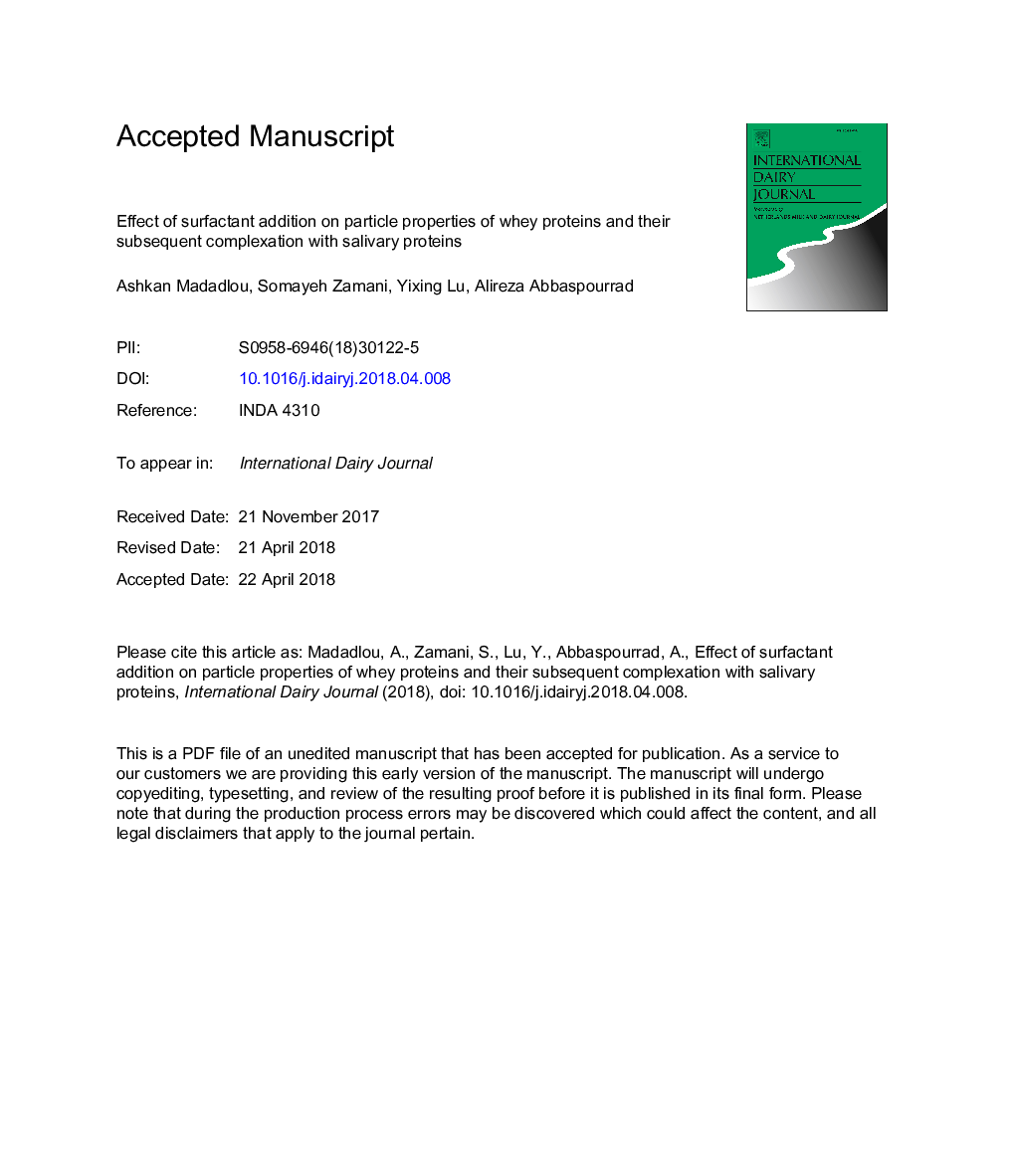| Article ID | Journal | Published Year | Pages | File Type |
|---|---|---|---|---|
| 9954638 | International Dairy Journal | 2018 | 33 Pages |
Abstract
The astringency of acidified whey protein beverages is unpleasant to consumers and a challenge to the industry to overcome. It may be associated with whey-salivary protein interactions. We examined the influence of complexation of whey proteins with a low molecular weight surfactant (Tween) on some characteristics of subsequently formed whey-salivary protein aggregates. Surface tension measurements indicated that hydrophobic interaction between Tween and whey proteins was initiated at a Tween-to-WPI ratio of 1:50. Tween dissociated β-lactoglobulin dimers to monomers, decreased the size and percentage of non-soluble aggregates (>4000 nm) and decreased the ζ-potential of WPI samples. Surfactant complexation also decreased the surface hydrophobicity of whey proteins. In addition, based on Fourier-transform infrared spectroscopy, surfactant reduced intermolecular protein interactions. Nonetheless, measurement of accessible thiol group content revealed that surfactant-whey protein interaction did not unfold the proteins. Surfactant complexation resulted in smaller aggregates and a lower turbidity of whey protein-saliva mixture.
Related Topics
Life Sciences
Agricultural and Biological Sciences
Food Science
Authors
Ashkan Madadlou, Somayeh Zamani, Yixing Lu, Alireza Abbaspourrad,
